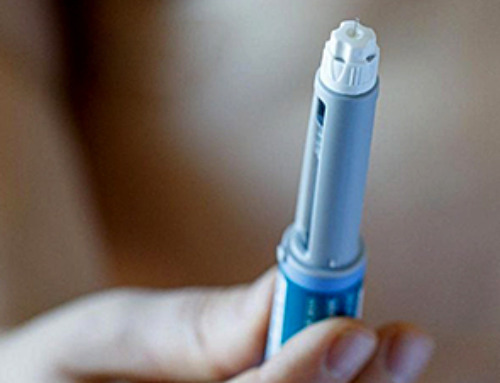Researchers in Japan found that although the Alzheimer's drug lecanemab successfully removes amyloid plaques from the brain, it does not restore the brain's waste-clearing system within the first few months of treatment.
The study suggests that by the time symptoms appear, damage to nerve cells and the glymphatic system is already well established, making short-term recovery unlikely.
Lecanemab's Surprising Limits in Alzheimer's Treatment
Researchers at Osaka Metropolitan University in Japan, led by graduate student Tatsushi Oura and Dr. Hiroyuki Tatekawa, reported that lecanemab, a drug designed to clear amyloid plaques from the brain, does not improve the brain's waste removal system in the early stages after treatment.
Their results indicate that the nerves of Alzheimer's disease (AD) patients have already sustained considerable damage, and that this waste-clearing function does not rebound quickly. The findings point to the need for treatments that target several biological problems at the same time.

The Complex Web of Alzheimer's Disease Mechanisms
The researchers' results add another piece to the long and complicated effort to understand how AD develops. Although it is the most widespread neurodegenerative disorder, it remains difficult to treat because many different factors contribute to its progression.
A major driver of nerve cell damage in AD is the accumulation of amyloid-β (Aβ) in the brain. In people without the disease, a network known as the glymphatic system circulates cerebrospinal fluid along the spaces surrounding arteries and into brain tissue. There, this fluid mixes with interstitial fluid to help remove metabolic waste products, including Aβ. The name "glymphatic system" comes from the involvement of glial cells in this process.
In AD, however, Aβ builds up and causes arteries to stiffen. This reduces the movement of fluid between the brain and the cerebrospinal fluid, which disrupts waste removal and leads to a series of harmful changes that produce AD symptoms.
Testing Lecanemab's Effects on Brain Clearance
Lecanemab, which was recently approved as a therapeutic option, is intended to lower Aβ levels. To study its effects, the Osaka Metropolitan University team examined the glymphatic system in patients both before and after lecanemab treatment, using the DTI-ALPS index to measure changes.
They found no meaningful difference in this index when comparing pre-treatment results with measurements taken three months after therapy.
What This Means for Future Alzheimer's Treatments
Based on these observations, the researchers concluded that while anti-amyloid drugs can reduce plaque buildup and slow additional cognitive decline, they may not be able to restore functions already lost. By the time symptoms appear, many patients likely have long-standing neuronal damage and glymphatic impairment that are difficult to reverse. The results emphasize how many interconnected factors drive AD and how few of them can be quickly repaired.
"Even when Aβ is reduced by lecanemab, impairment of the glymphatic system may not recover within the short-term," Oura said. "In the future, we want to look at factors like age, the stage of the disease, and degree of lesions in the white matter to further understand the relationship between changes in the glymphatic system due to lecanemab treatment and the outcome of treatment. This will help understand the best way to administer treatment to patients."
Reference: "Unchanged Early Diffusion Tensor Imaging Along Perivascular Space Index After Amyloid-Targeting Disease-Modifying Therapy in Alzheimer's Disease: A Preliminary Study" by Tatsushi Oura, Hiroyuki Tatekawa, Akitoshi Takeda, Ayako Omori, Natsuko Atsukawa, Shu Matsushita, Daisuke Horiuchi, Hirotaka Takita, Taro Shimono, Daiju Ueda, Yoshiaki Itoh and Yukio Miki, 8 September 2025, Journal of Magnetic Resonance Imaging.
DOI: 10.1002/jmri.70118
The study was published in Journal of Magnetic Resonance Imaging.
News
“Great Unified Microscope” Reveals Hidden Micro and Nano Worlds Inside Living Cells
University of Tokyo researchers have created a powerful new microscope that captures both forward- and back-scattered light at once, letting scientists see everything from large cell structures to tiny nanoscale particles in a single shot. Researchers [...]
Breakthrough Alzheimer’s Drug Has a Hidden Problem
Researchers in Japan found that although the Alzheimer’s drug lecanemab successfully removes amyloid plaques from the brain, it does not restore the brain’s waste-clearing system within the first few months of treatment. The study suggests that [...]
Concerning New Research Reveals Colon Cancer Is Skyrocketing in Adults Under 50
Colorectal cancer is striking younger adults at alarming rates, driven by lifestyle and genetic factors. Colorectal cancer (CRC) develops when abnormal cells grow uncontrollably in the colon or rectum, forming tumors that can eventually [...]
Scientists Discover a Natural, Non-Addictive Way To Block Pain That Could Replace Opioids
Scientists have discovered that the body can naturally dull pain through its own localized “benzodiazepine-like” peptides. A groundbreaking study led by a University of Leeds scientist has unveiled new insights into how the body manages pain, [...]
GLP-1 Drugs Like Ozempic Work, but New Research Reveals a Major Catch
Three new Cochrane reviews find evidence that GLP-1 drugs lead to clinically meaningful weight loss, though industry-funded studies raise concerns. Three new reviews from Cochrane have found that GLP-1 medications can lead to significant [...]
How a Palm-Sized Laser Could Change Medicine and Manufacturing
Researchers have developed an innovative and versatile system designed for a new generation of short-pulse lasers. Lasers that produce extremely short bursts of light are known for their remarkable precision, making them indispensable tools [...]
New nanoparticles stimulate the immune system to attack ovarian tumors
Cancer immunotherapy, which uses drugs that stimulate the body’s immune cells to attack tumors, is a promising approach to treating many types of cancer. However, it doesn’t work well for some tumors, including ovarian [...]
New Drug Kills Cancer 20,000x More Effectively With No Detectable Side Effects
By restructuring a common chemotherapy drug, scientists increased its potency by 20,000 times. In a significant step forward for cancer therapy, researchers at Northwestern University have redesigned the molecular structure of a well-known chemotherapy drug, greatly [...]
Lipid nanoparticles discovered that can deliver mRNA directly into heart muscle cells
Cardiovascular disease continues to be the leading cause of death worldwide. But advances in heart-failure therapeutics have stalled, largely due to the difficulty of delivering treatments at the cellular level. Now, a UC Berkeley-led [...]
The basic mechanisms of visual attention emerged over 500 million years ago, study suggests
The brain does not need its sophisticated cortex to interpret the visual world. A new study published in PLOS Biology demonstrates that a much older structure, the superior colliculus, contains the necessary circuitry to perform the [...]
AI Is Overheating. This New Technology Could Be the Fix
Engineers have developed a passive evaporative cooling membrane that dramatically improves heat removal for electronics and data centers Engineers at the University of California San Diego have created an innovative cooling system designed to greatly enhance [...]
New nanomedicine wipes out leukemia in animal study
In a promising advance for cancer treatment, Northwestern University scientists have re-engineered the molecular structure of a common chemotherapy drug, making it dramatically more soluble and effective and less toxic. In the new study, [...]
Mystery Solved: Scientists Find Cause for Unexplained, Deadly Diseases
A study reveals that a protein called RPA is essential for maintaining chromosome stability by stimulating telomerase. New findings from the University of Wisconsin-Madison suggest that problems with a key protein that helps preserve chromosome stability [...]
Nanotech Blocks Infection and Speed Up Chronic Wound Recovery
A new nanotech-based formulation using quercetin and omega-3 fatty acids shows promise in halting bacterial biofilms and boosting skin cell repair. Scientists have developed a nanotechnology-based treatment to fight bacterial biofilms in wound infections. The [...]
Researchers propose five key questions for effective adoption of AI in clinical practice
While Artificial Intelligence (AI) can be a powerful tool that physicians can use to help diagnose their patients and has great potential to improve accuracy, efficiency and patient safety, it has its drawbacks. It [...]
Advancements and clinical translation of intelligent nanodrugs for breast cancer treatment
A comprehensive review in "Biofunct. Mater." meticulously details the most recent advancements and clinical translation of intelligent nanodrugs for breast cancer treatment. This paper presents an exhaustive overview of subtype-specific nanostrategies, the clinical benefits [...]




















